
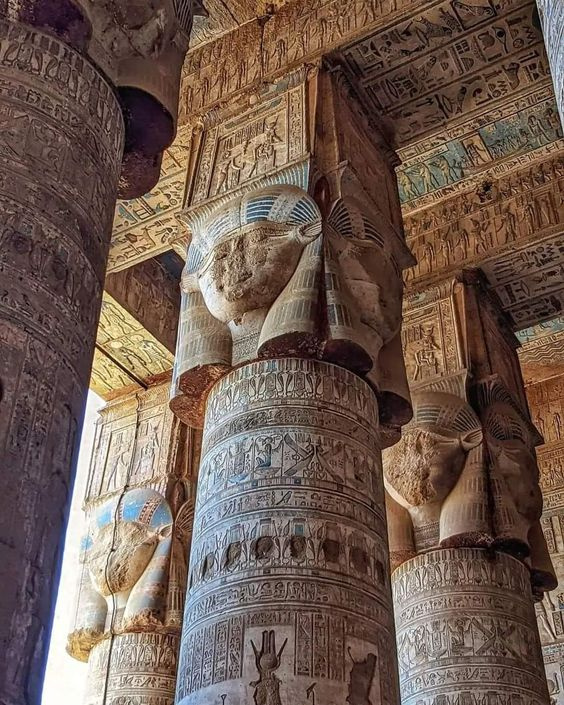
Dendera Temple
The temple of Dendera dates back to the Ptolemaic Period.
The Dendera Temple
Dendera is a village in the Qena Governorate in Egypt. It contains one of the most important temples of the ancient Egyptians, which is the Temple of Hahor or the Temple of Dendera. The ancient Egyptian name for it is (Ta-Nathret - meaning the land of God). The first origins of the temple go back to the era of the Fourth Dynasty, when King Khufu built this temple. The Temple of Dendera is considered one of the most important and oldest ancient Egyptian temples, for the goddess Hathor, the goddess of love and motherhood among the ancient Egyptians. It consists of the temple The main temple is dedicated to the goddess Hathor, a small temple dedicated to the goddess Isis, and the sacred lake. The temple is famous for the astronomical scenes depicted on the ceiling, as well as the many scenes depicting kings and emperors making offerings to the gods. This temple is also distinguished by the presence of catacombs. The history of this current temple dates back to the Greek and Roman era, where It was built by King Ptolemy III of sandstone, and many Roman emperors added to it. The construction of the temple continued for 200 years, and it was restored and some additions were made during the reign of King Pepi I of the Sixth Dynasty. King Thutmose III, King Thutmose IV, King Ramesses II, and King Ramesses III restored this temple. The current temple dates back to the Greek and Roman eras, beginning with the reign of Ptolemy IX and ending during the reign of the Roman Emperor Trajan. The The temple of Dendera dates back to the Ptolemaic Period. Dendera Temple is considered one of the largest temples in Egypt. It is one of the temples that was not affected by geographical factors or wars. It in itself is considered a legend in the art of architectural architecture because of its wonderful Pharaonic inscriptions, its magnificent roof, and its beautiful, luxurious columns. Despite the passage of thousands of years, it is still in good condition. Very good compared to other similar temples from this period.
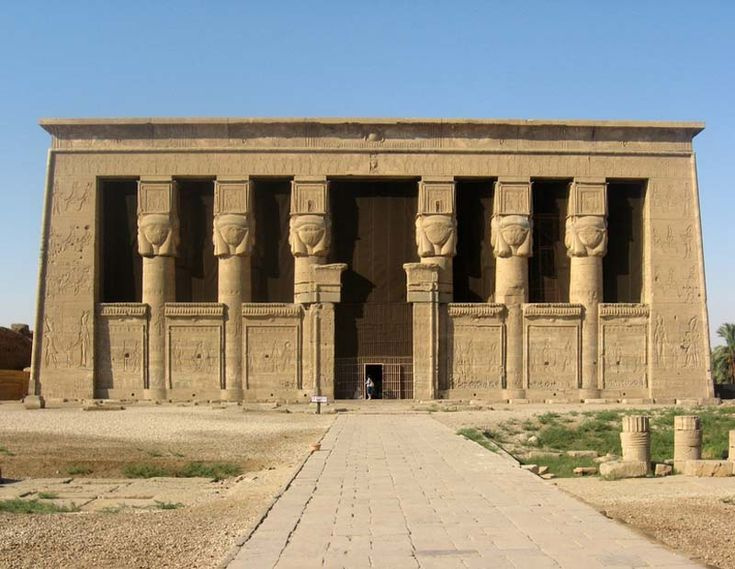
The Goddess Hathor
Hathor (also spelled Hator or Het-Heru) is a major Egyptian goddess who personified the principles of motherhood, joy, fertility, and love. It was also associated with music, dance, and pleasure. Hathor was one of the most popular and widely worshipped deities in ancient Egypt, and her temples were found throughout the country. Hathor's name means "house of Horus," and she was often depicted as a cow, a symbol of motherhood and fertility. She was also sometimes depicted as a woman with a cow's head or ears, or as a woman with a sun disk between her horns. Hathor was often associated with other deities, including Ra, the sun god, and Horus, the sky god. She was also associated with the goddess Isis, and the two goddesses were often depicted together.
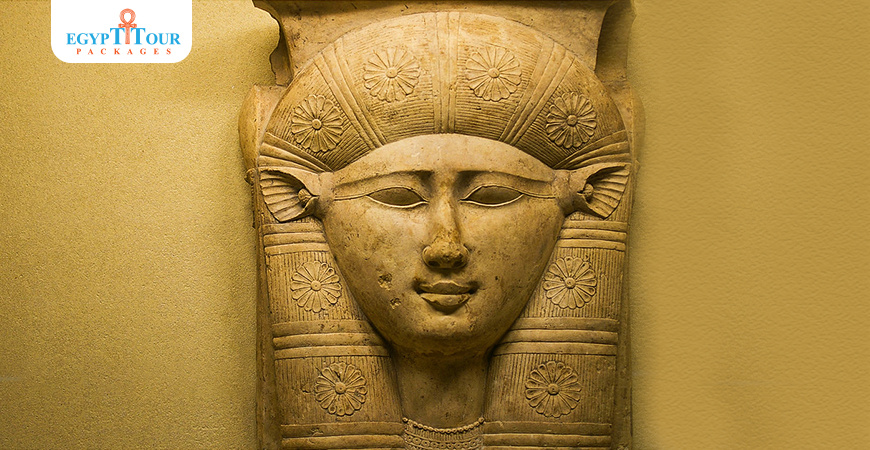
The Dendera Temple Complex(Temple gate)
- Temple gate:
The temple gate was built by both Emperor Domitan and Emperor Trajan in the first century AD, and it leads to an open courtyard through the Roman birth house and the Coptic church on the right side.There is a great similarity in the layout of the temple between the temples of Dendera and the Temple of Edfu, which is not a coincidence. The Temple of Dendera is completely similar to the Temple of Edfu, but in a miniature form, and it depicts the intimate relationship between the god Hathor in Esna and the god Horus in Edfu, and the divine offerings and rituals.
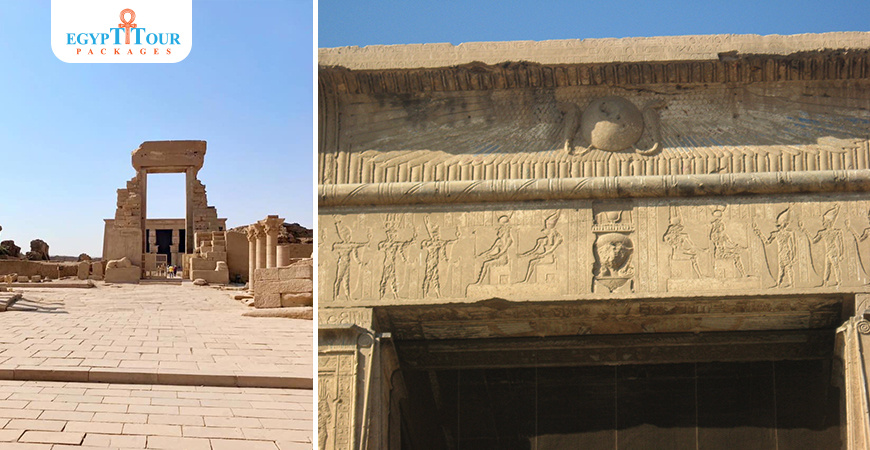
Dendera Light Bulb
The strange and wondrous thing in the The temple of Dendera dates back to the Ptolemaic Period. Dendera Temple is that in one of the Pharaonic inscriptions spread on the walls of the The temple of Dendera dates back to the Ptolemaic Period. Dendera Temple , there are several drawings that, when you look at their details, look like an electric lamp. The strangest thing is that this inscription was repeated many times in the inscriptions on the walls, which caused amazement and confusion.The Dendera Light Bulb is a controversial motif found on a number of reliefs in the Hathor temple at Dendera, Egypt. It depicts a lotus flower with a snake emerging from it, and a stem or cable extending downwards from the lotus. The stem or cable is sometimes shown to be connected to a base, which has been interpreted as a light bulb socket.This engraving has sparked controversy among scholars as to whether it represents an ancient light bulb. Some scholars believe that the engraving simply represents a growth coming out of a lotus flower, and that the other appearances in the engraving are merely decorative elements. Ultimately, the true nature of the Dendera Light Bulb is unknown. It is possible that the reliefs depict actual light bulbs, or that they are simply symbolic representations of the Egyptian creation myth.

The Dendera Temple Complex
- The outer wall:
The temple building is completely surrounded by a mud-brick wall, and the temple campus can be entered through a large sandstone gate bearing a khartouche of Emperor Trajan with his title. - The Great Hypostyle Hall
its facade appears supported by six columns whose capitals depict the goddess Hathor. It includes 24 columns whose capitals were formed in the shape of the goddess Hathor, with the head of a woman and the ear of a cow, along with her symbols. The ceiling of this hall bears astronomical views related to astrology, as these views are considered unique in their kind, which gives this room special importance in Its views reflect the extent of Egyptian progress in the field of astronomy and astrology.
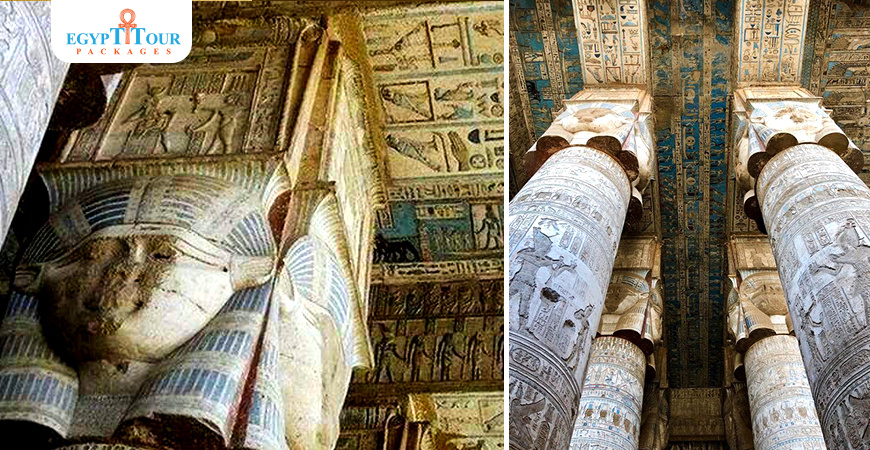
Ceiling of the Great Hypostyle Hall
The ceiling of the The temple of Dendera dates back to the Ptolemaic Period. Dendera Temple is considered a creative masterpiece. It was built on several levels depending on the different heights of the rooms located below it. We can reach the upper roof by stairs. This ceiling contains astronomical views related to astrology. These views are considered unique and reflect the extent of the progress of the Egyptians in the field of astronomy.
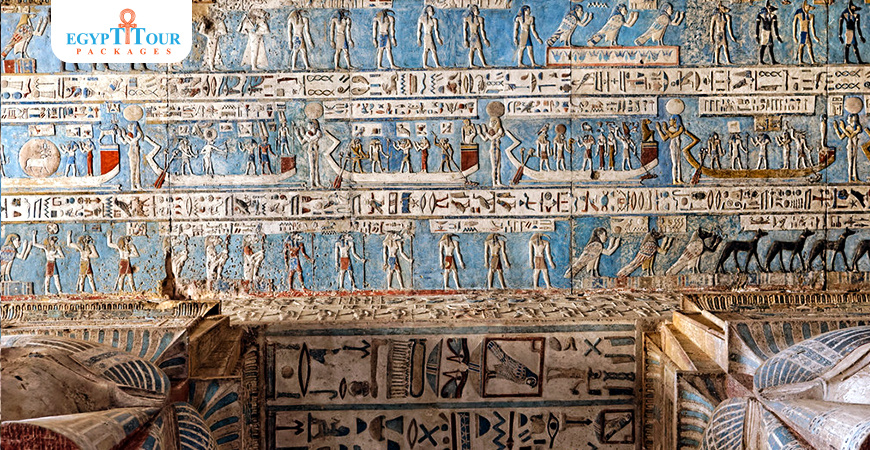
The Dendera Temple Complex(the stairs)
In the second hall, there is an entrance that leads to two stairs, one of which is a straight staircase and the other is a circular or spiral staircase, on which several ceremonies are engraved. These stairs were used in processions, which played an important role in the celebrations of the New Year. The sides of the stairs were decorated with inscriptions representing the 12 months of the year. The walls of the stairs were decorated with scenes representing priests carrying, statues of Hathor, and some other symbols. There are stairs leading to an underground crypt. The walls of these stairs are decorated with scenes of the procession of priests ascending the stairs carrying statues of Hathor. The Great Hypostyle Hall leads to the Small Hypostyle Hall.
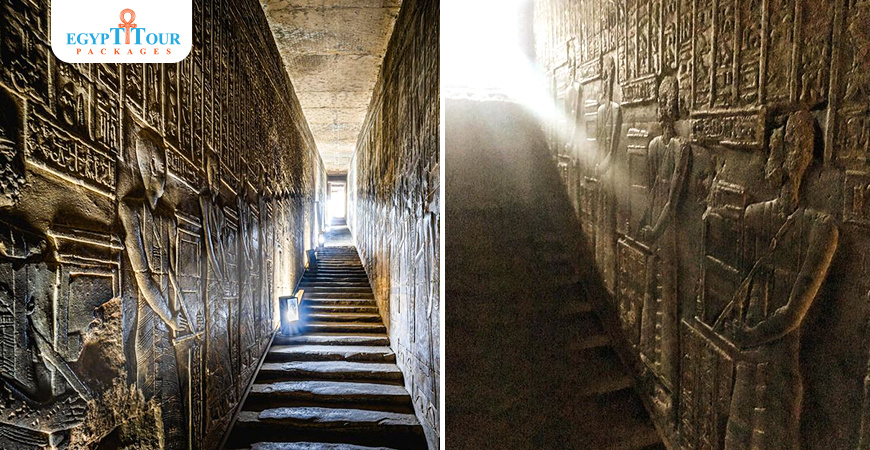
Small Column Hall
It is relatively small and its ceiling bears six columns of the type known as flower heads. This hall is known as the Hall of Scenes. It is organized in three rows and its scenes include scenes of the offering and some scenes of the foundation of the temple, where we find the king measuring the land of the temple in preparation for its planning. On each side of this hall there are three Some rooms have light penetrating through openings in the ceiling, giving them awe and beauty. It is noted that the royal khartouches were left empty due to the many kings who came one another during the construction of the temple. The small pillared hall leads to the offering hall, where sacrifices were made to the gods. It is a covered hall with a staircase leading to the ceiling of the temple.

The Dendera Temple Complex(offering hall)
- Offering hall
It is a hall next to the celebration hall, and it included inscriptions on its walls of tables on which sacrifices were made from the king to the goddess Hathor and her son Horus. In the ceiling of this hall there are openings for ventilation and lighting, and to the right and left of this hall are two stairs that lead to the roof of the temple, where the Osiris chapels, whose walls contain scenes of the mut and resurrection of the god. Osiris, and the offering hall leads to the Ninth Hall. - Ninth Hall:
Two rooms open to this hall. The one located to the east is called the Linen Room, where linen fabrics used for purposes of worship were kept. To the west, there is a room called the Silver Room. - Vestibule:
It is a hall after the sacrificial hall, from which a door emerges into the purification chamber, which played an important role in the New Year’s Day celebrations, which is the holiday in which a statue of Hathor and the other gods was displayed under the rays of the sun, where the ritual of union with the disk of the sun took place on the first day of the New Year.

Dendera Temple (Holy of Holies)
- Holy of Holies
From the Ninth Hall, we reach the Holy of Holies, which is located on the axis of the temple. The Holy of Holies area is a completely dark area, and only the king or the high priest is allowed to enter it. It included the sacred boat of the gods and the statue of the gods. The scenes recorded on the walls of this room show the sacred boats of the gods Hathor and the god Horus. The walls were decorated. The exterior of the Holy of Holies, with views of the introduction, then the northern and southern districts. Surrounding the Holy of Holies is a relatively high corridor, on both sides of which we find 11 rooms, each with a different purpose, called the hidden rooms.
- The basements
There are also 12 crypts in the temple. These crypts are considered the place designated for holiday celebrations, from which statues of golden deities and ritual tools necessary for performing religious rituals are produced. The precious statues are preserved inside them, and they contain an important collection of inscriptions and scenes, including scenes of the opening of the stone door, and the winged Khepri, who pushes the disk of the winged sun in front of him between The signs of the East and West and other wonderful scenes and engravings.
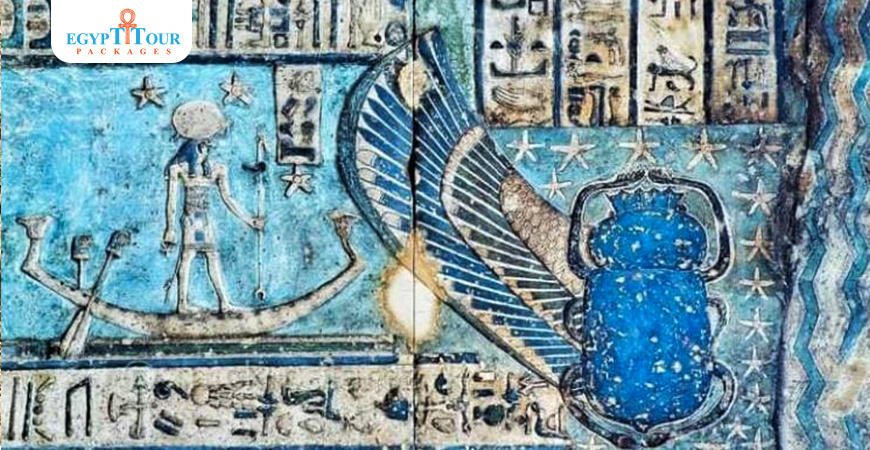
Dendera temple facts(Holy lake)
- Holy lake
The Holy Lake, although it is small in size, is wonderful. It has a wall surrounding it and a ladder that slopes down to reach the lake’s water. This lake was used by the priests of the temple for purification work, but now, unfortunately, it has become filled with trees.
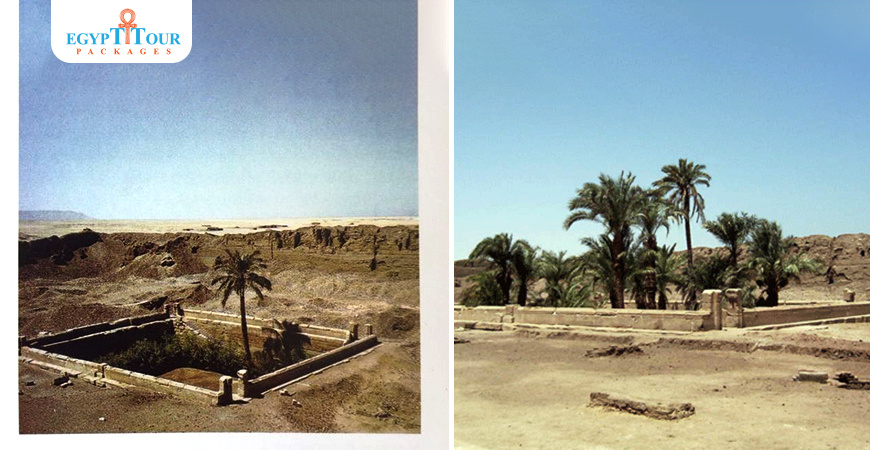
Dendera temple facts(Temple of Isis)
- Temple accessories
First, wells, a sanatorium, and a boat cabin inside the temple:
The temple is surrounded from the outside by a mud-brick wall. Inside this wall there are things other than the temple itself that complement its splendor and beauty. There is a shrine dating back to the Eleventh Dynasty, a Ptolemaic shrine, and Cleopatra’s bathroom. It also contains a House of divine birth from the Thirty Dynasty, and House of divine birth from the Roman era, in addition to the Holy Lake with an attached shrine for boats. A sanatorium, a Coptic church from the fifth century AD, another House of divine birth for King Nectanebo, a temple of Isis, a group of water wells, and a A measure of the Nile.
Temple of Isis:
There is a Temple of Isis, which is a small temple next to the western corner of the Great Temple. It was built by the Roman Caesar Nero. The two temples are connected by a road.
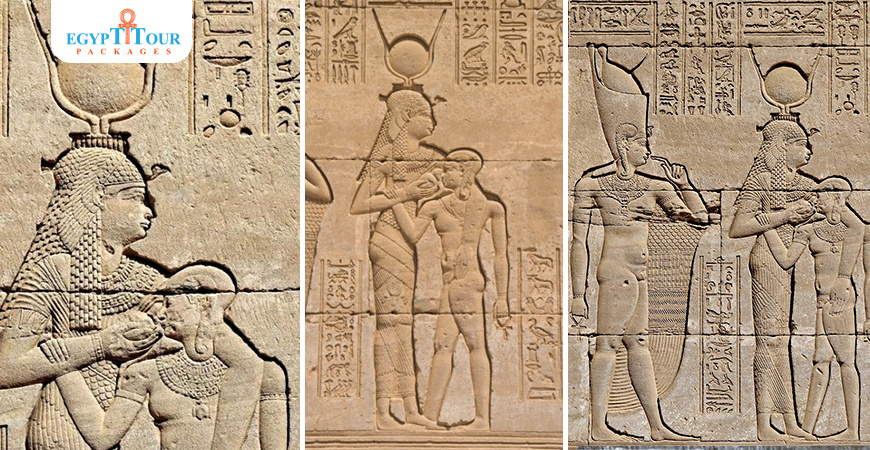
Dendera temple (House of divine birth)
- House of divine birth
There is a Mamizi (Birth House) north of the Temple of Isis, which was gifted to the goddess Hathor. Birth houses reach the other world in the belief of the Pharaohs, and it is a temple dedicated to divine birth, whose construction began during the reign of King Nectanebo I of the 30th Dynasty. As well as the second great Temple of Divine Birth, which was built in The era of Emperor Augustus, which contains a prominent inscription, depicts an imaginary gate leading to the other world, surmounted by three winged sun discs, then a row of cobra snakes crowned with sun discs.
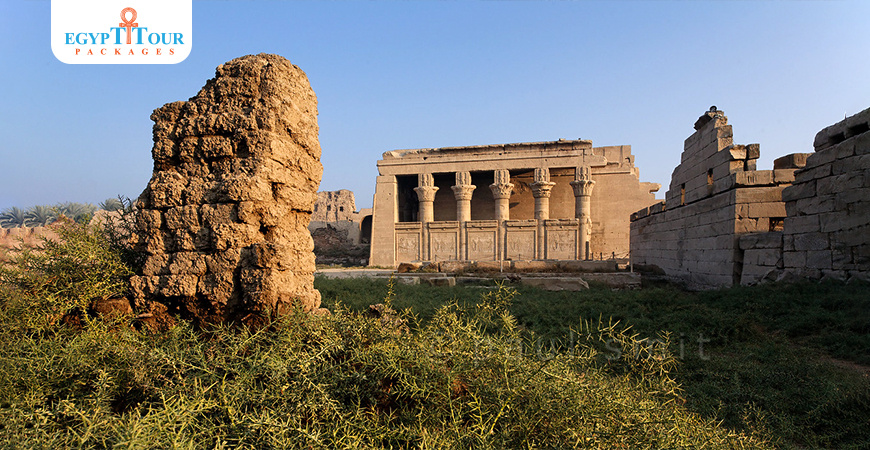
Dendera temple complex photos
Temple rituals Inscribed in the first The eastern cabin of the temple were 159 hieroglyphic columns. These texts listed the rites and rituals of the Kihik celebration, starting from the 12th to the 30th of the month. These texts provided a linguistic and detailed source for the Osirian rituals in their various stages. The Osiris drama at Dendera lasted 18 days, from the 12th to the 30th of Khik, in which the priests played the roles of the gods. We find a priest wearing an Anubis mask, referring to the god himself. We also find another priest wearing a falcon mask, referring to the god Horus, while Osiris was represented with a small statue. Thus, during the ritual practice, we find interaction. Among the elements participating in the drama, between the people (priests) and the statues... the texts of the Secrets of Kiahk in Dendera were divided into seven books, explaining the details of the Osiris rituals and ceremonies. Each book had its own title. One scholar believes that these seven books have lost their unity and consistency as they did not The rituals are presented in a logical manner, in addition to the presence of a contradiction in some important points, such as the list of cities participating in the rituals or in how the divine statues of Osiris were made and repeated. Osiris celebrations continued for more than two thousand years, until the god Serapis was introduced, who was a mixture between the god Osiris and the god Apis.
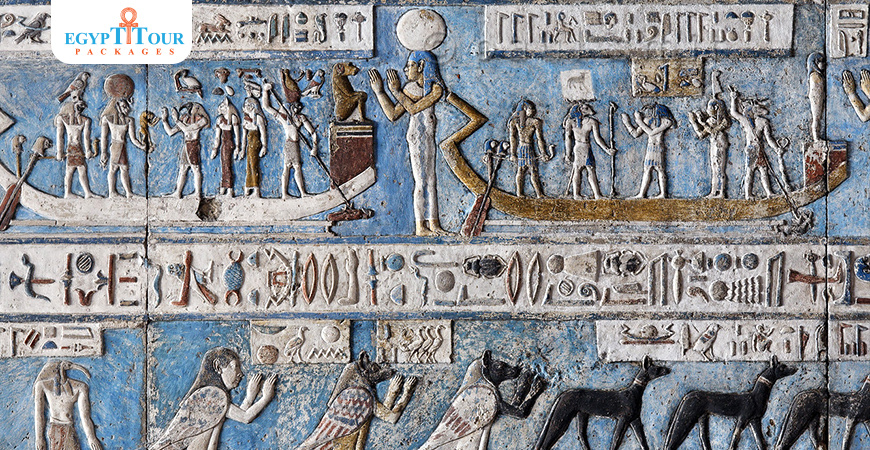
Dendera temple(Restoration works)
Restoration works.It included the hall of the second columns and the side rooms attached to it, and the removal of dirt and signs of damage to the temple caused by erosion factors resulting from the passage of time, in order to restore the original colors of the temple with the aim of promoting it as a tourist attraction and restoring its tourist status as one of the most important ancient Egyptian temples, and that all the restoration work was carried out by Egyptian hands from Restorers of the Supreme Council of Antiquities, in addition to developing lighting means to show off the splendor and beauty of its decorations and raise the efficiency of visitor services. The restoration work also included the silver and holy water room, then the room leading to the stairs, in addition to the restoration of the rooms located on the eastern side of the temple. It also included the restoration of the Holy of Holies and the shrine of the god Nut.....
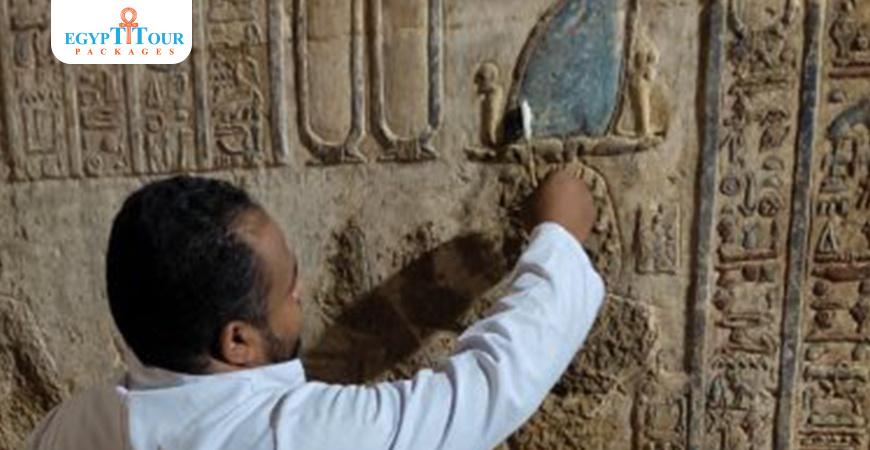
Dendera temple complex(The shrine of the god Nut)
- The shrine of the god Nut:
Birth of the sun in Hathor Temple at Dendera.' The rising sun is born from the lap of sky goddess Nut on the astronomical ceiling in the outer hypostyle hall of the Hathor Temple at Dendera. The ceiling consists of seven separate strips but here we are looking at a detail of the EASTERNMOST STRIP. The entire strip is enveloped by the outstretched body of the sky goddess Nut and her feet are visible in the right lower corner of this picture. The wave pattern on Nut's dress symbolizes the cosmic river on which the sun traveled during the night. The rays of the rising sun touch the head of the goddess Hathor which is located on top of a simplified image of a temple. The scene portrays the first day of the Egyptian New Year on which a statue of Hathor, brought from a crypt in the temple and placed on its roof, was rejuvenated by the first rays of the New Year sun.
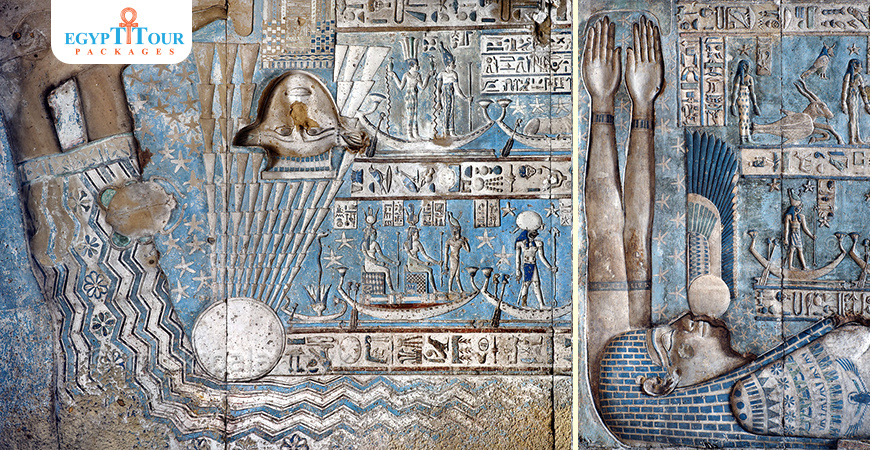
Dendera temple complex(The waxing moon)
The waxing moon and the Eye of Horus at Dendera.' This forceful image of the moon on a pillar, decorated with the "healed eye" of Horus, can be found on the astronomical ceiling of the outer hypostyle hall in the Hathor Temple at Dendera. The astronomical ceiling consists of seven separate strips but here we are looking at a detail of the FIRST STRIP WEST from centre. The deities in this picture form part of a panel that deals with the waxing moon and which is located at the middle of the strip. According to Egyptian mythology Horus lost his eye during a battle with Seth (the murderer of his father Osiris) and the eye (called 'Wadjet') was subsequently healed by Thoth, who is portrayed at the right-hand side of the picture. The destruction and healing of the eye was symbolically coupled by the ancient Egyptians to the waning and waxing of the moon. To the left of the moon are 14 stairs with gods who refer to the 14 days leading up to the full "healed" moon. From right to left they are Min (1), Atum (2), Shu (3), Tefnut (4), Geb (5), Nut (6), Osiris (7), Isis (8), Horus (9), Nephtys (10), Hathor (11), Horus (12), Tanenet (13) and Iunit (14).
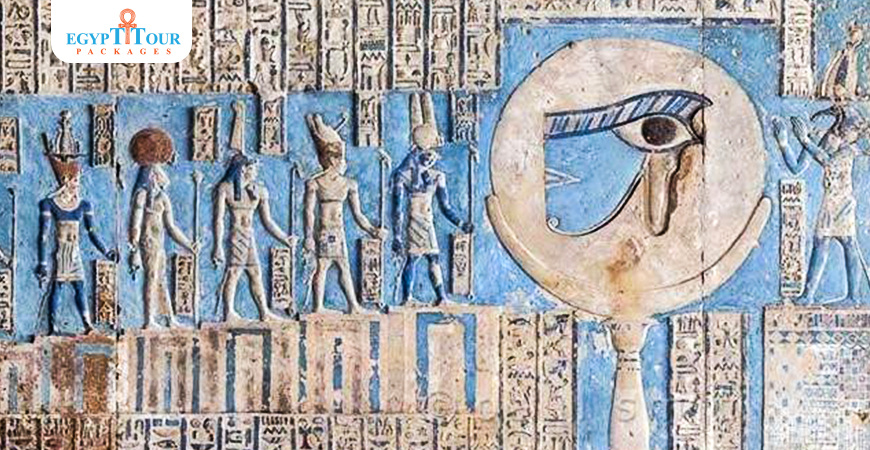
Dendera temple complex photos inside
'Resurrection of Osiris at Dendera.' A relief in the northernmost of the western Osiris chapels on the roof of the Hathor Temple at Dendera shows a winged Isis (on the right) watching over the resurrection of her husband Osiris. The chapel was used during the Osiris Festival in the month khoiak, which celebrated the resurrection of Osiris. This part of the The temple of Dendera dates back to the Ptolemaic Period. Dendera Temple was built during the later Ptolemaic period (first century BC).
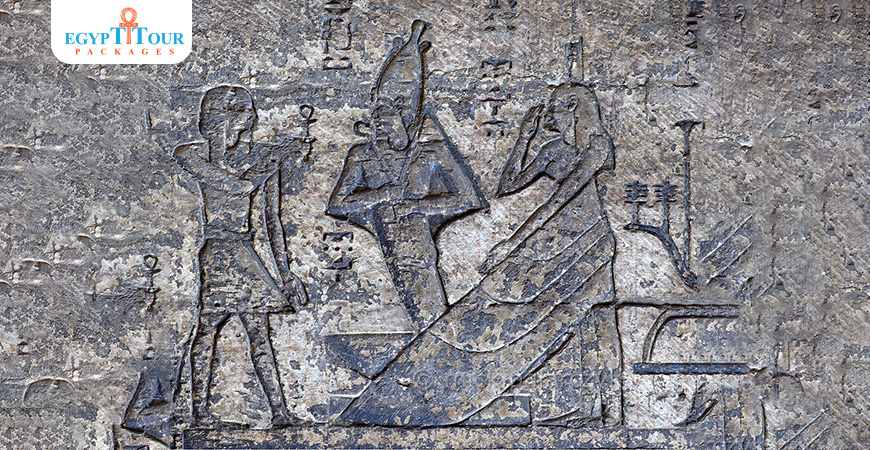
Dendera temple complex photos inside(Bes at Dendera)
- Bes at Dendera:
Relief of Bes in the forecourt of the Hathor Temple at Dendera. The dwarf-like god was seen as the protector of pregnant women, newborn babies and the family. With his grotesque features he is meant to scare off the bad spirits of the night and guard over the safety of the sleeping household. The relief dates to the Ptolemaic-Roman period.
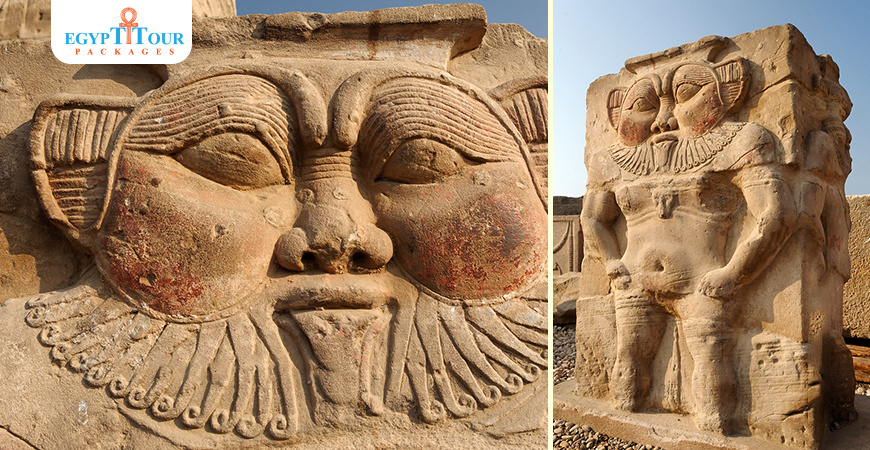
Dendera temple zodiac
- Zodiac of Dendera:
The art and architecture of the ancient Egyptians is amazing enough. That they could also map the sky nearly as well as it is done in the 21st century is simply astounding. A bas relief – the Zodiac of Dendera – that was found in the The temple of Dendera dates back to the Ptolemaic Period. Dendera Temple of Hathor proves this beyond a doubt.The eight feet square sandstone ceiling panel from 50 BC is reputed to be the world’s first horoscope. It charts the movement of the stars and depicts the zodiac constellations quite like we do today. And it comes replete with theories of encoded messages and ‘end of world’ prophecies.If you want to see it, however, you’ll have to plan a trip to Paris. For it was pried out from inside the Chapel of Osiris in the The temple of Dendera dates back to the Ptolemaic Period. Dendera Temple of Hathor and transported to France in 1821. It now resides in the Louvre. In its place is a plaster cast covered in soot, it’s details indistinguishable.
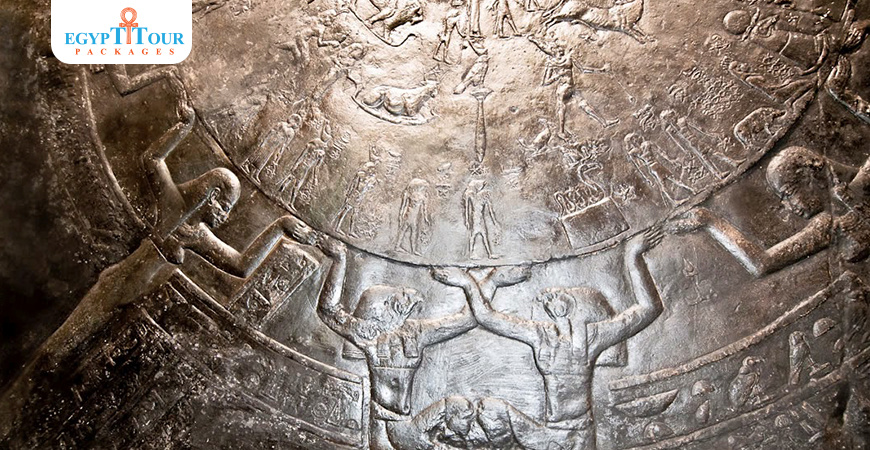
Dendera temple complex photos inside(The Inscription of Cleopatra)
Lion gargoyle at Dendera.' A lion-headed gargoyle adorns the western exterior wall of the Hathor Temple at Dendera, allowing the water of occasional downpours to drain from the roof. Its image was probably also intended to ward off evil forces. This part of the The temple of Dendera dates back to the Ptolemaic Period. Dendera Temple was built during the later Ptolemaic period (first century BC).
The Inscription of Cleopatra VII with her son Caesarion in the The temple of Dendera dates back to the Ptolemaic Period. Dendera Temple is a large relief carving on the south exterior wall of the temple. It depicts Cleopatra and Caesarion standing before the goddess Hathor, who is shown in her iconic form as a cow with a sun disk between her horns. The inscription is significant because it shows Cleopatra and Caesarion being recognized as the legitimate rulers of Egypt. It also provides evidence that Cleopatra was able to maintain her power and influence, even after the death of Julius Caesar and the rise of Octavian.
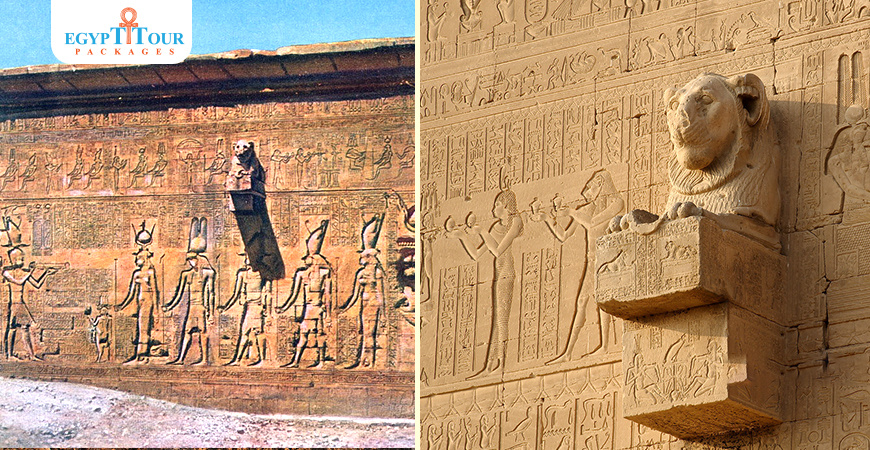
Dendera Temple Zodiac(The astronomical ceiling)
'Sky goddess and zodiac in Hathor Temple at Dendera.' The astronomical ceiling in the outer hypostyle hall of the Hathor Temple at Dendera consists of seven separate strips, which are conspicuous by their bright blue colour. Behind the pillars we see the second strip to the east from center. The EASTERNMOST STRIP we see in its entirety. It is enveloped by the outstretched body of the sky goddess Nut. On the right she swallows a winged setting sun, which is reborn from her lap on the left during dawn. The wave pattern on Nut's dress symbolizes the cosmic river on which the sun has traveled during the night. The strip actually consists of two registers. The upper register has six zodiac signs: Cancer (between Nut's legs), Gemini, Taurus, Aries, Pisces and Aquarius. These sign are of Babylonic-Greek origin and are not found in Egypt before it was conquered by Alexander the Great in 332 BC. This register also has deities who portray the twelve hours of the night, the planets and some ancient Egyptian constellations.
'Zodiac sign Aries at Dendera.' A jumping ram portrays the zodiac sign Aries on the astronomical ceiling in the outer hypostyle hall of the Hathor Temple at Dendera.
Zodiac sign Pisces at Dendera.' A fish on either side of a pond makes up the zodiac sign Pisces on the astronomical ceiling in the outer hypostyle hall of the Hathor Temple at Dendera.
Zodiac sign Taurus at Dendera.' A black raging bull portrays the zodiac sign Taurus on the astronomical ceiling in the outer hypostyle hall of the Hathor Temple at Dendera. The animal seems to stoop under the weight of a big white moon.
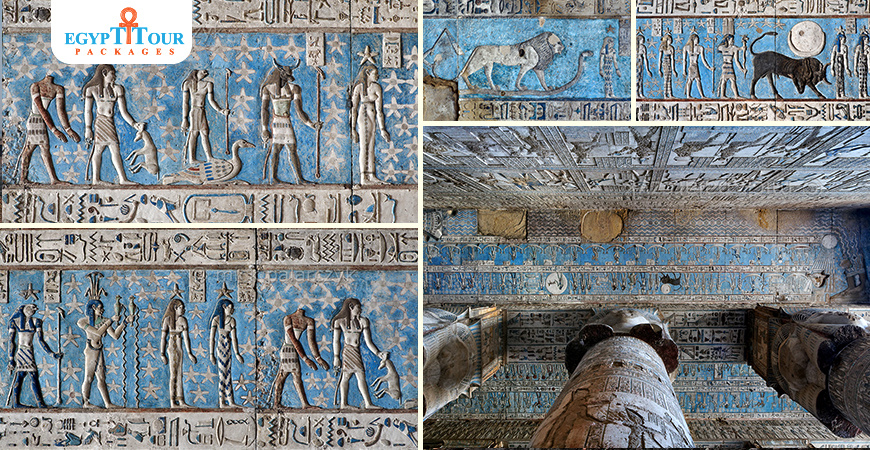
Post A Comment
Your Email Address Will Not Be Published.
Hot Categories
Topics of Qena
Suggested Tours
Table of Contents
- The Dendera Temple
- The Goddess Hathor
- The Dendera Temple Complex(Temple gate)
- Dendera Light Bulb
- The Dendera Temple Complex
- Ceiling of the Great Hypostyle Hall
- The Dendera Temple Complex(the stairs)
- Small Column Hall
- The Dendera Temple Complex(offering hall)
- Dendera Temple (Holy of Holies)
- Dendera temple facts(Holy lake)
- Dendera temple facts(Temple of Isis)
- Dendera temple (House of divine birth)
- Dendera temple complex photos
- Dendera temple(Restoration works)
- Dendera temple complex(The shrine of the god Nut)
- Dendera temple complex(The waxing moon)
- Dendera temple complex photos inside
- Dendera temple complex photos inside(Bes at Dendera)
- Dendera temple zodiac
- Dendera temple complex photos inside(The Inscription of Cleopatra)
- Dendera Temple Zodiac(The astronomical ceiling)
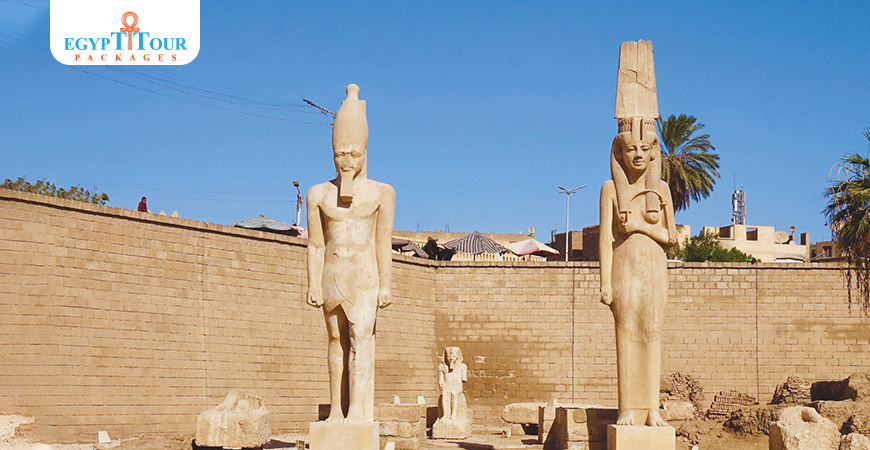


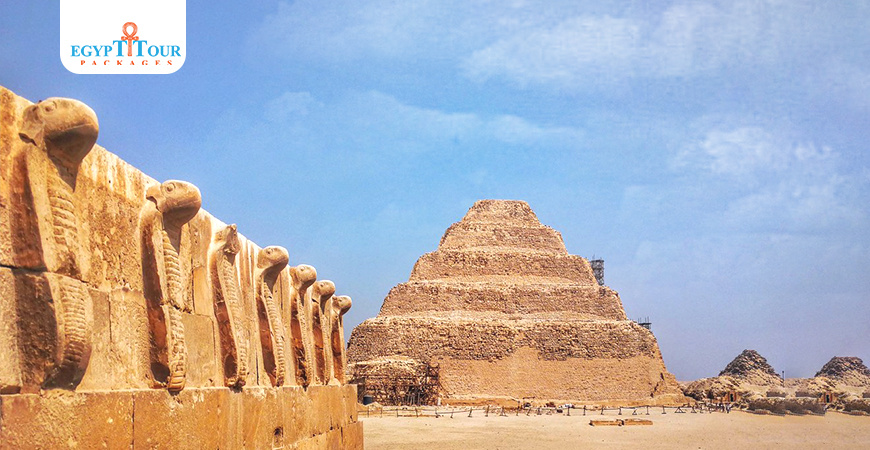







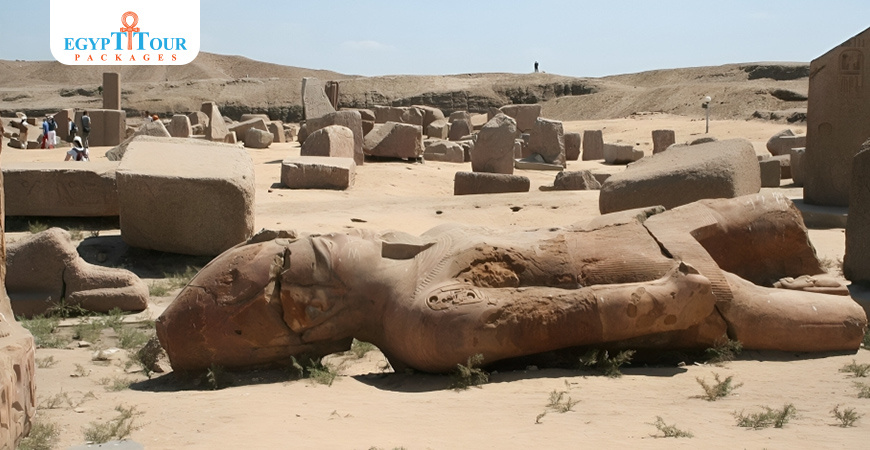


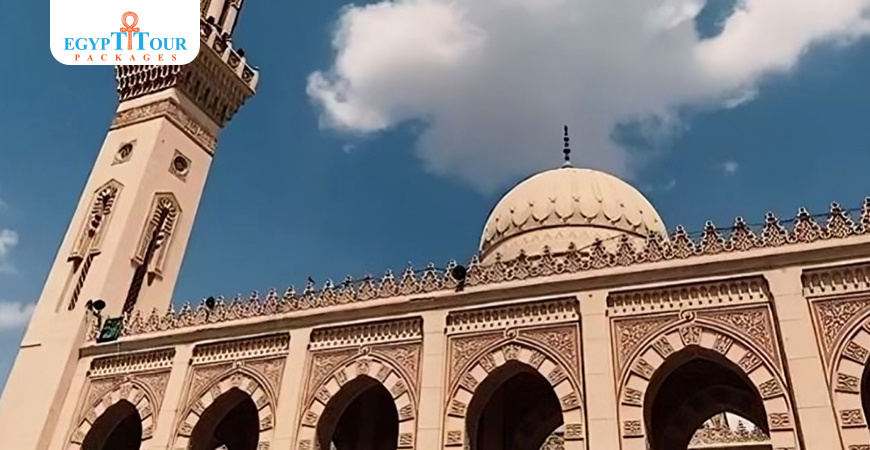


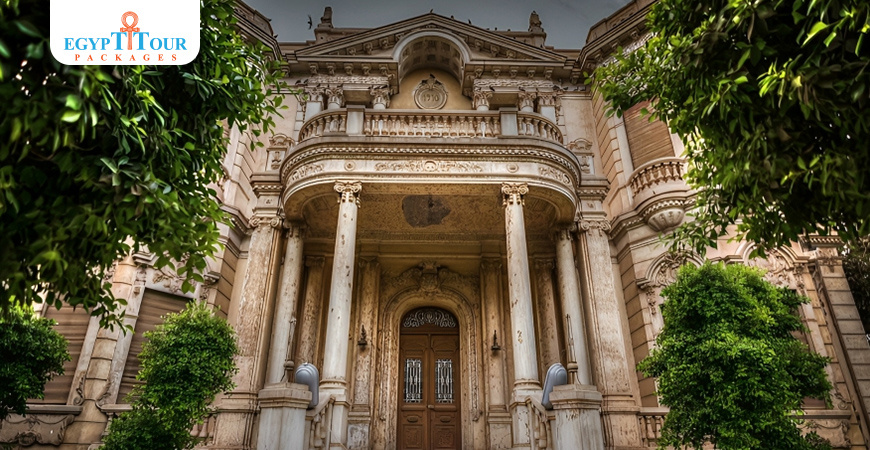
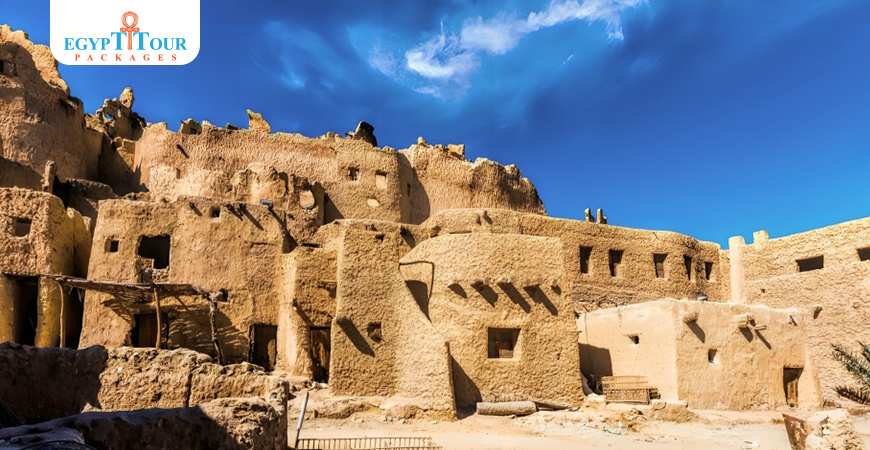
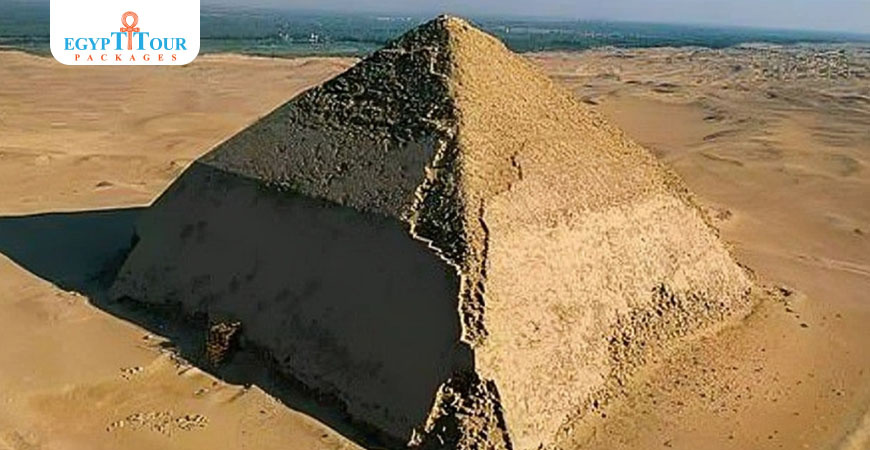
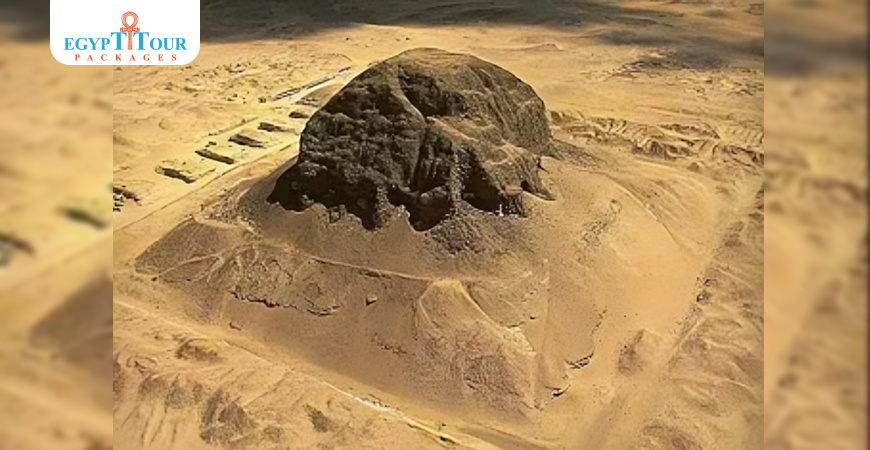
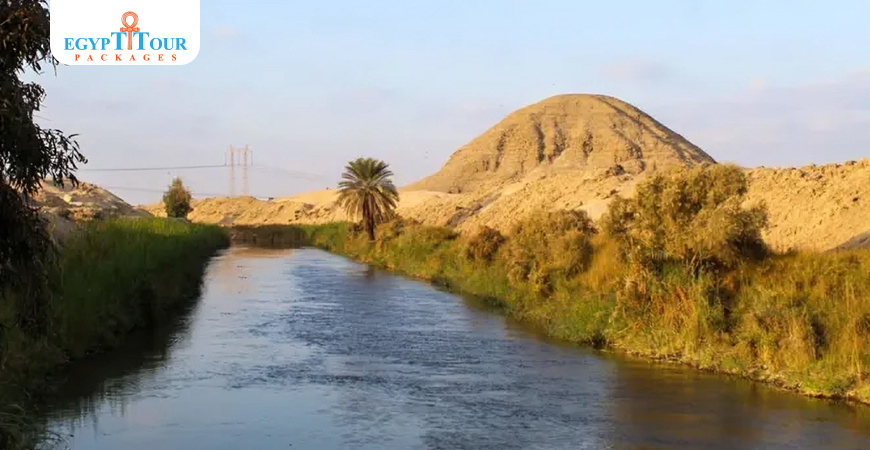


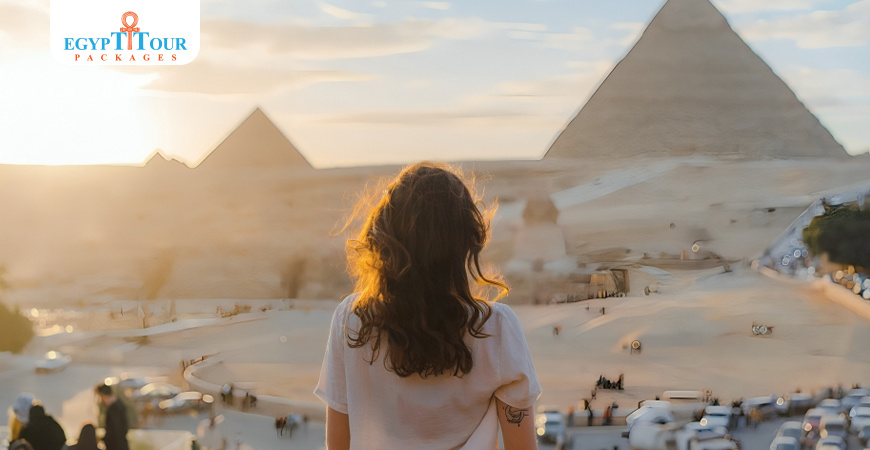
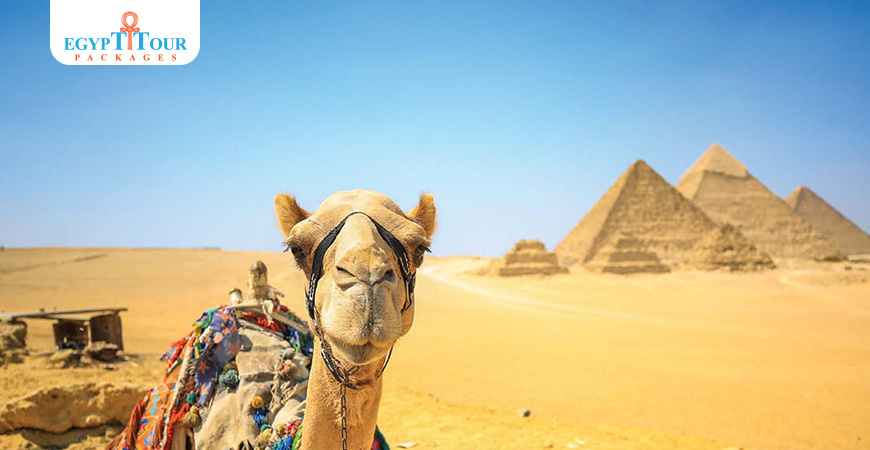











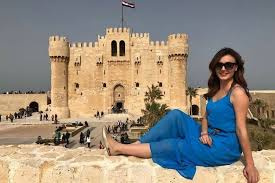

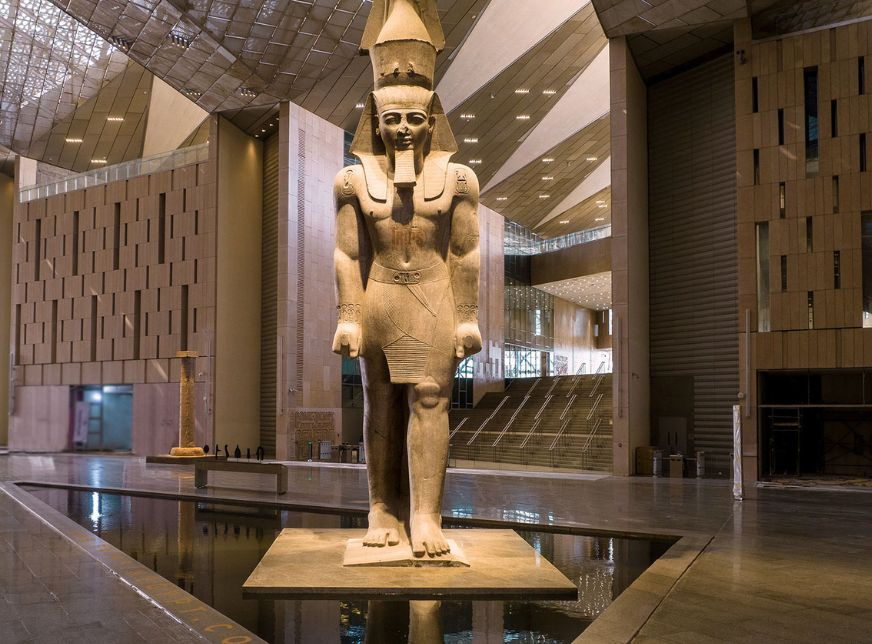



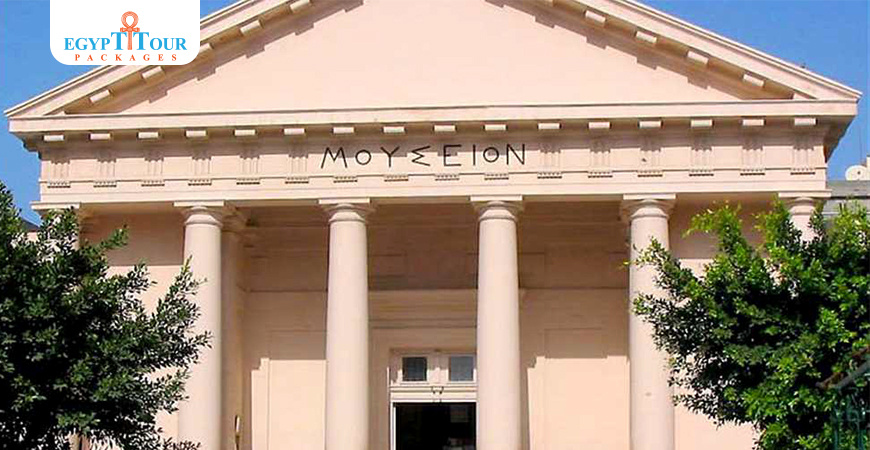





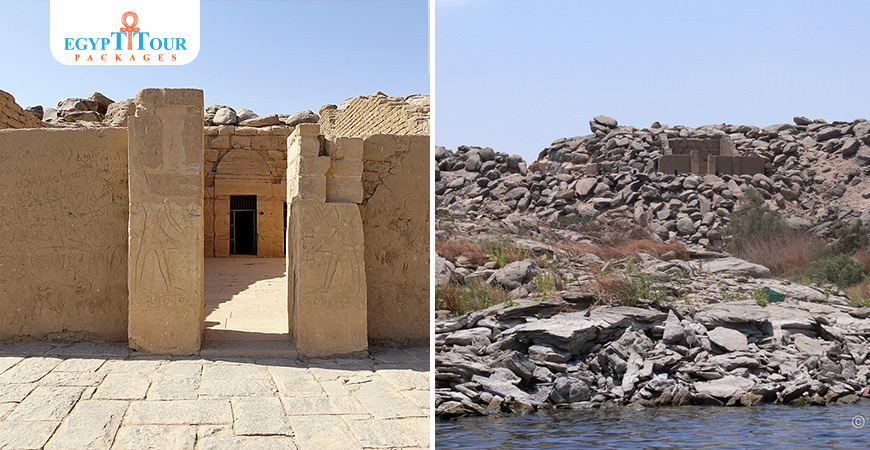
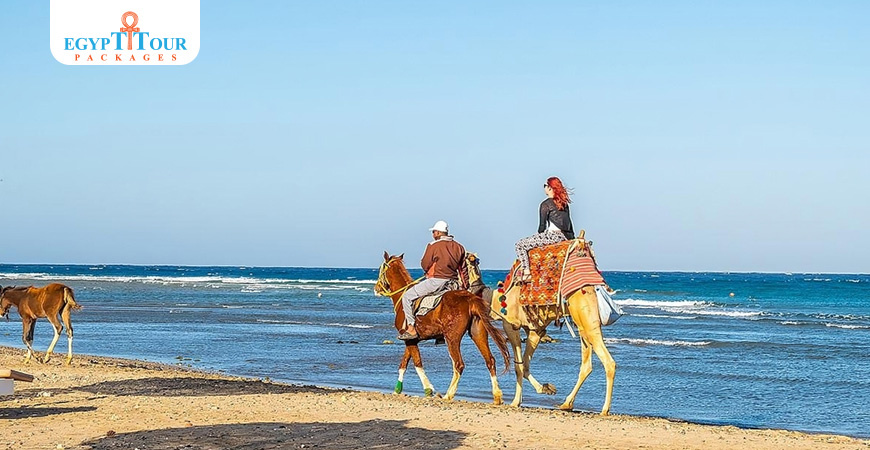

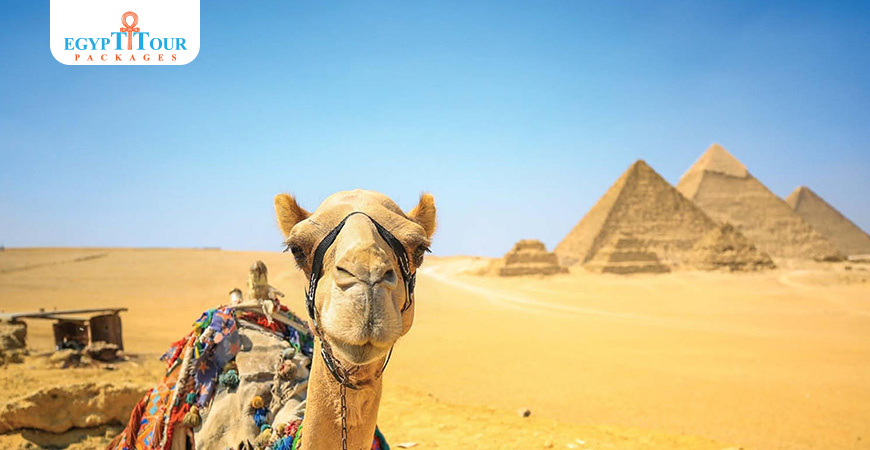
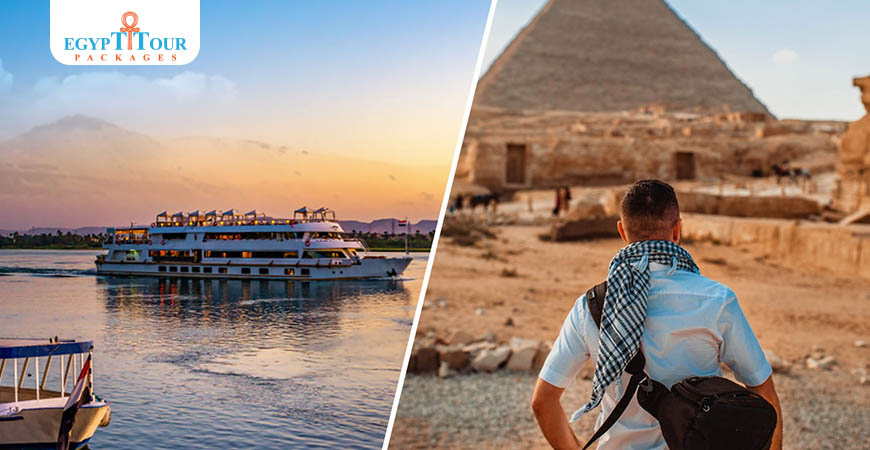


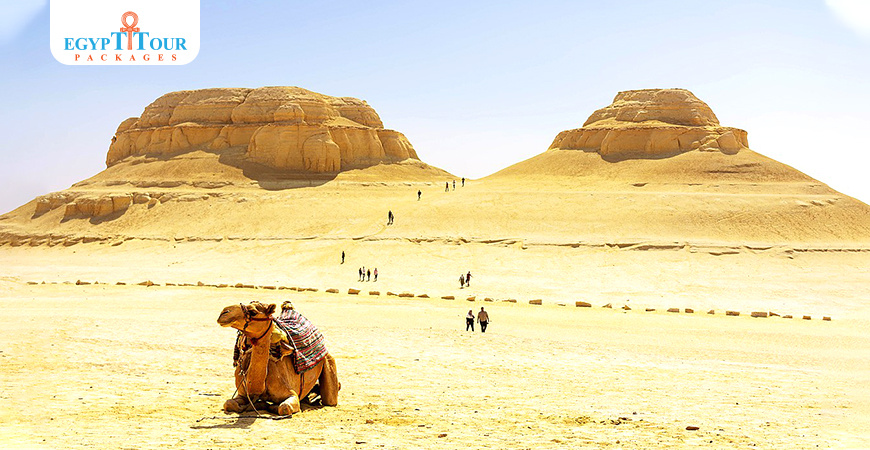



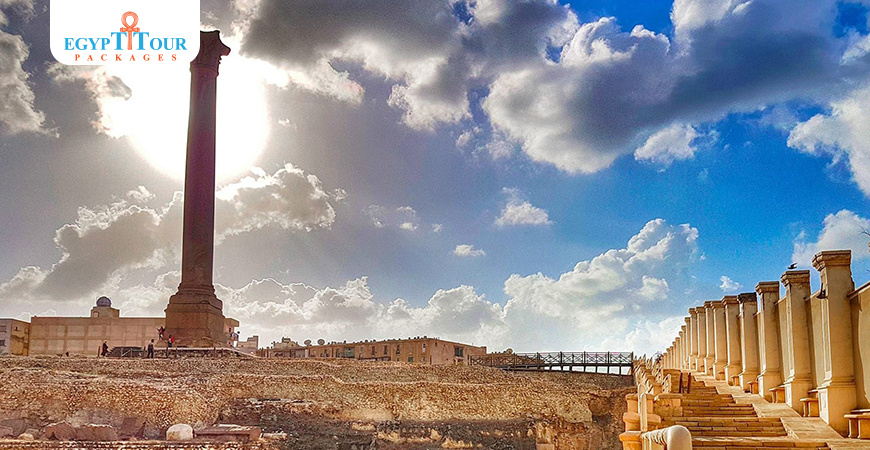
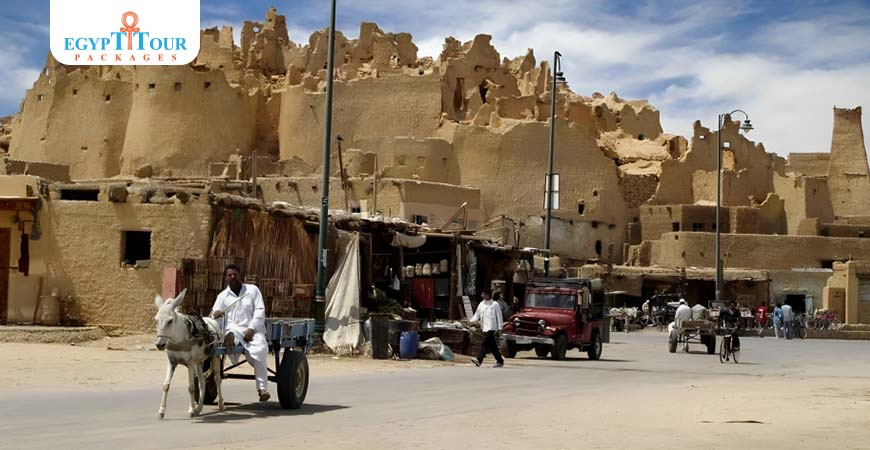

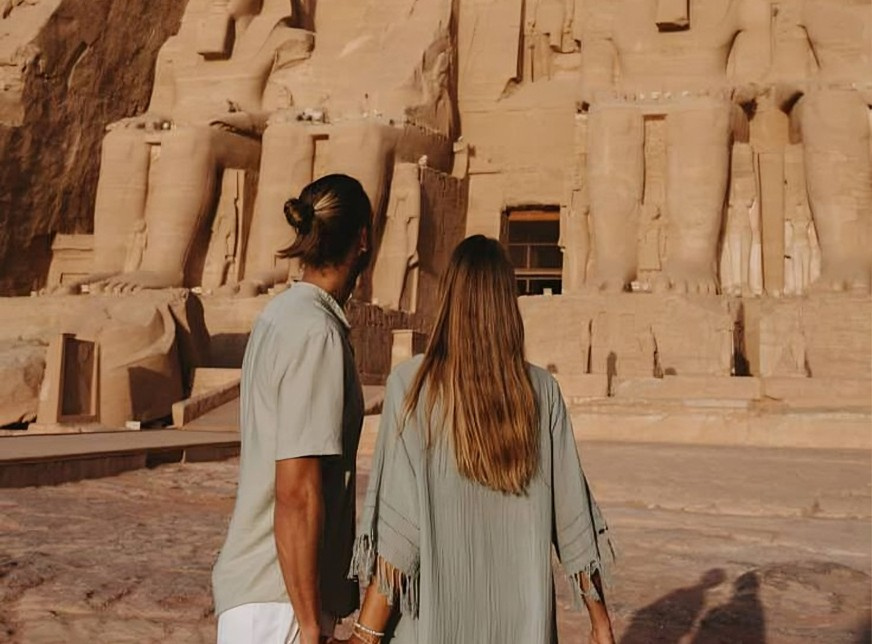
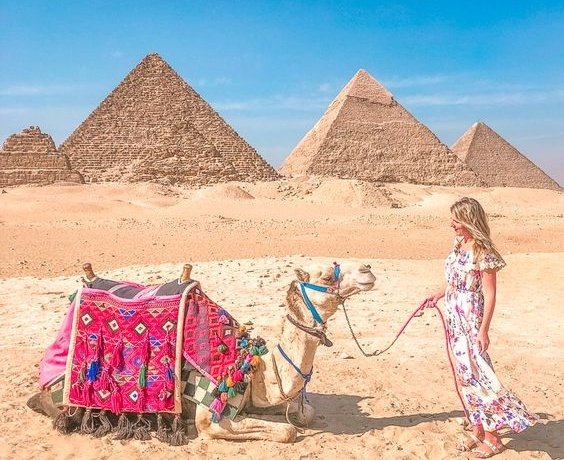

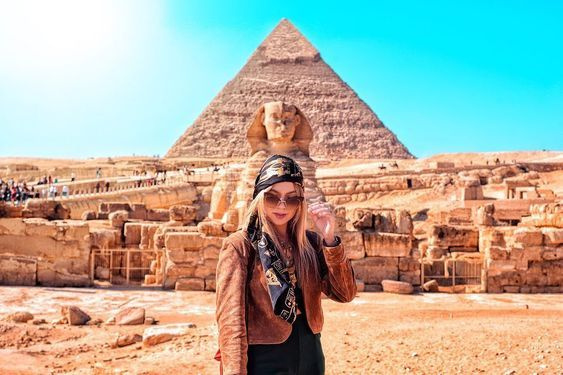
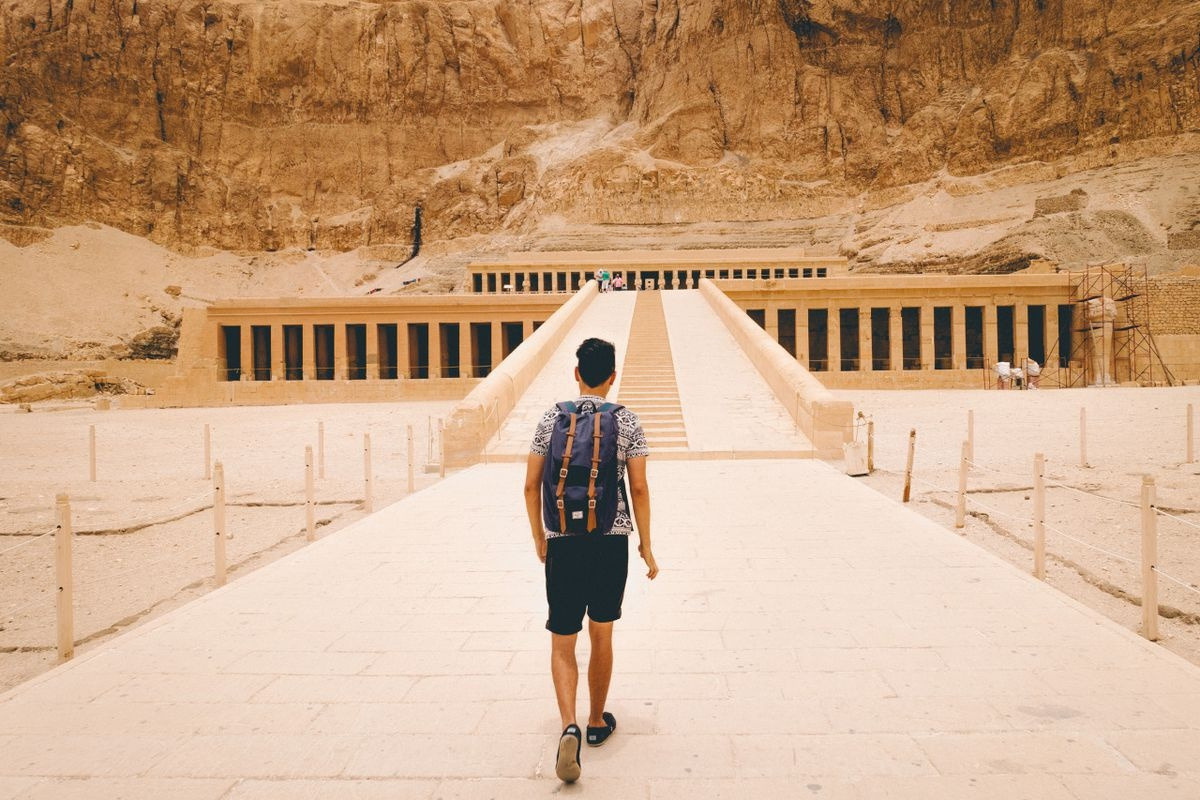
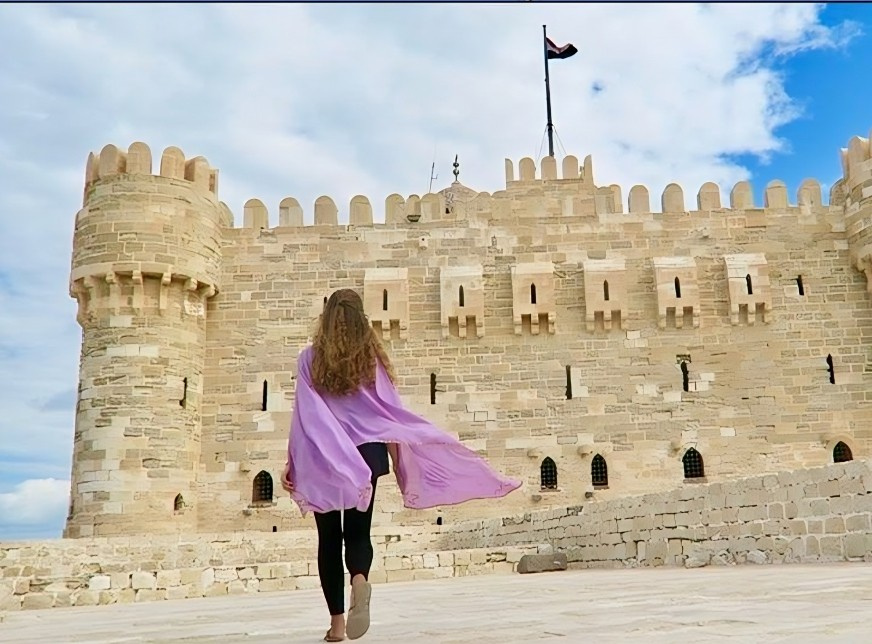
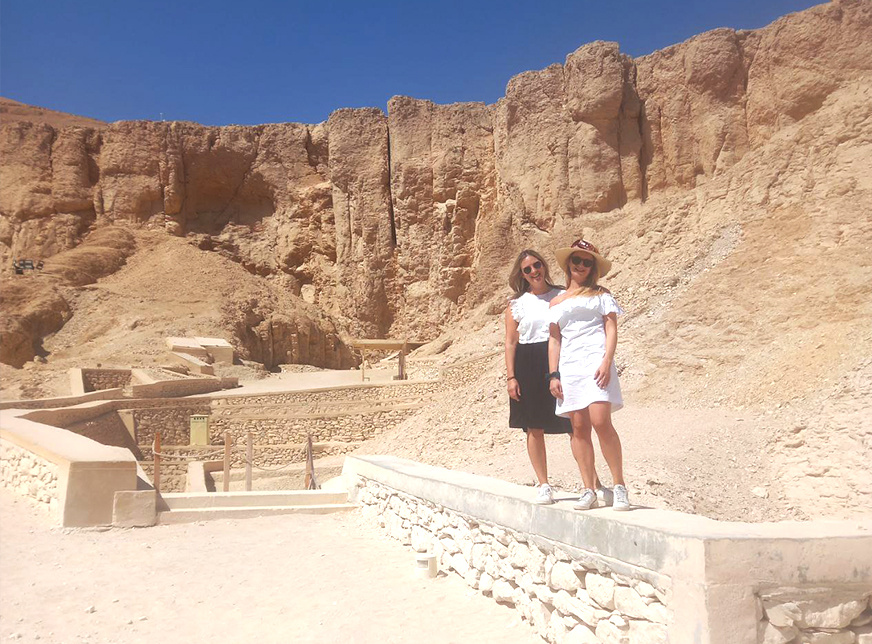
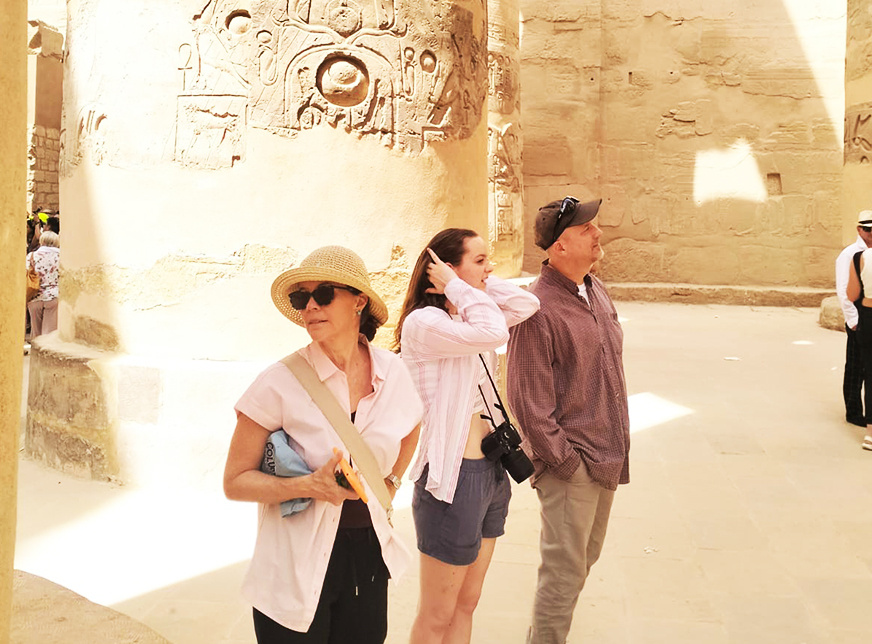

0 Comments